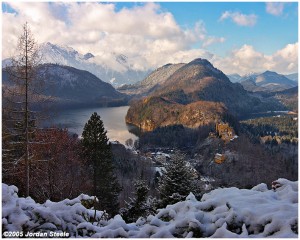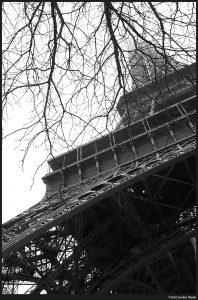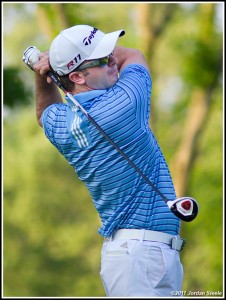What is good enough for your shooting?
There are many factors that go into determining what camera is really truly good enough for you. I’ve narrowed it down to six questions for purposes of this discussion.
1) What kind of photographer are you? Are you a casual snapper, an enthusiast or a working professional?
2) What kind of subjects do you shoot?
3) How large do you print? More specifically, how large do you print for certain types of photography?
4) What kind of lighting conditions do you typically shoot in?
5) What are the system considerations?
6) What are your personal preferences?
Question 1: What kind of photographer are you?

You need to look at what kind of photographer you are. Are you someone who just likes to record events as they come along and just care about having something recognizable? If so, frankly most modern cell phone cameras will produce images good enough for you. My iPhone 4S has a camera good enough to make small prints that look outstanding. Even 8×10 prints can look very nice if taken in good light. If you need more range or flexibility for your casual shooting, most modern point and shoot cameras will have good enough image quality for most any purpose, depending on the answers to the questions below. Of course, even casual snappers sometimes want better quality, so go all the way through these questions before deciding on what is good enough.
If you are an enthusiast, then you have the most to think about with regards to the rest of the questions. You probably want the best quality you can get, but on the other hand, you do not have clients depending on you to get ‘the shot’ at all costs. If you are a working professional, you obviously will need to know your target audience. If you’re a fine art landscape photographer, you may want to venture to the medium format digital realm. A photojournalist needs a responsive, accurate focusing camera that is good in low light, but probably doesn’t need extremely high resolution, as most images will be printed at web size or smaller than 5×7. If you’re a working pro, though, you probably know what you need better than most enthusiasts.
Question 2: What kind of subjects do you shoot?
We as photographers like to shoot different things. If you are a landscape photographer, you may want the best low-ISO capability possible, with the widest dynamic range to capture every range of tones and colors you can find. If you’re a studio photographer who only shoots with strobes, you have control over the light and so good low ISO performance will be important, but dynamic range will be less important than color accuracy. High ISO performance will likely be irrelevant for you. If you are a candid portrait shooter or street photographer, you probably want responsiveness and good high ISO capability. A sports photographer, photojournalist or wildlife photographer will want the fastest and most accurate autofocus, including continuous autofocus to enable them to get the shots sharp and in focus with a moving target.
The point here is to evaluate what you need to shoot. Those who shoot events of all sorts are going to need to worry about camera performance, speed and autofocus accuracy a lot more than someone who shoots landscapes and may not even NEED autofocus. You need to take a look at what you shoot and tailor your camera choice based on those needs.
This is also where camera size comes into play. If you are a street shooter, or you like to hike and hate lugging around huge heavy gear bags, then a lightweight and discrete system is going to be key, and you may want to gear towards a mirrorless CSC or a rangefinder. In many cases, small image quality tradeoffs will be well worth the handling and weight considerations.
Question 3: How large do you print?

This is the big one, in my opinion. It’s probably the biggest key in the ‘good enough’ decision making process, at least with regards to image quality and resolution. If you are shooting and will only be using your images for the web or for prints 8×12 and smaller, pretty much ANY camera on the market today will provide image quality necessary for quality prints at those sizes. The picture of the Eiffel Tower at the right is hanging on my wall in my house, printed at 10×15″. The two closest prints to it on the wall are a 20×30″ print from my old Canon Digital Rebel, and another 20×30″ print from my Canon 1Ds Mark II. The shot at the right was taken with my 2001 era Kodak DC3400 point and shoot, with an amazing resolution of 2 megapixels. Never once, in all the time people have looked at these prints, has someone noticed that it was taken with a lesser camera than the other two prints. Yes, if you go right up to the image and put your nose 6 inches away, you can notice a lack of fine detail, especially compared with the 16MP image to its left, but no one except pixel peeping photographers ever looks at an image that way. Obviously, that camera isn’t good enough for many other conditions I shoot in and has nowhere near the feature set I require now, but for small prints in good light, it looks good.
In my experience, most any Digital SLR or Compact System Camera is capable of making outstanding 20″ prints and smaller at ISO 400 and below. This is including DSLRs all the way back to 2003. Most any large sensor 12 MP camera can make good low ISO shots up to 30″. At higher ISOs, a lot depends. I have found that 10×15″ prints up to ISO 1600 look fantastic from an 8 MP Canon EOS 30D. Modern Micro 4/3 cameras can easily print to 12×18″ at ISO 1600 and look fantastic. If you can tolerate some grain, they look great even larger. The fact is, I think that most any DSLR or CSC made in the last year will make prints good enough for 95% of photographers. Most photographers print 20×30″ prints or smaller. At high ISOs, most photographers print even smaller, and not so much out out necessity, but rather because the subjects that tend to be photographed at high ISO are not subjects that are generally enlarged to huge print size. Most of my high ISO shoot is natural light portraiture…I almost never enlarge these beyond 8×12. And even the relatively ‘small’ Micro 4/3 format yields very good looking 8×12″ prints up to ISO 6400.
But, what if you print HUGE. Say, regularly 40-60″ prints? Then you need the best you can get. Or, if you regularly shoot at ISO 6400-ISO12,800 and print larger images…you are going to want the best you can get, and you may not reach ‘good enough’ for a while longer.
Question 4: What kind of lighting conditions do you shoot in?
I’ve touched on part of this in the previous parts, but tailor your camera needs to the light you use. For studio use, high ISO and huge dynamic range sensors are largely wasted. If you shoot in noon-day sun, you will need something with high dynamic range (though most photographers try and avoid this time of day for shooting, but sports photographers, for instance, don’t have this luxury.) If you shoot in nightclubs or concert venues, you will want a machine that performs great at high ISO.
Question 5: What are the system considerations?

This may seem like an odd question at first, but it is definitely a consideration in the type of camera you own. Quality imaging is capable from a wide variety of sensor sizes as well as manufacturers and lens mounts. For instance, if you are a portrait photographer and absolutely love the ultra-shallow depth of field provided by a fast lens and a full-frames sensor, then the crop cameras like APS-C DSLRs or CSCs or Micro 4/3 are not going to cut it, simply because you can’t achieve that ultra-shallow depth of field with smaller sensors. However, even Micro 4/3 is capable of providing significant background blur with fast lenses, but not as much as the larger sensor. I personally prefer the DOF I get with micro 4/3 for most types of my shooting, but that’s entirely a personal preference.
Another consideration is the lens systems available, and this can tie in with the above. If you want to shoot sports and obliterate the crowd in the background, you’re going to want long, fast lenses. A mirrorless camera is likely not what you’re going to want to shoot with, though full frame may require you to use longer lenses than you’d like, so an APS-C DSLR or one of Canon’s APS-H sensor DSLRs might be perfect. If you need specialty lenses like tilt-shift or such, then DSLRs are where you’re going to want to be. On the other hand, if you need discrete size or the ability to adapt manual focus lenses from all eras because they give you the look you desire, then a mirrorless CSC like Sony’s NEX, Nikon’s 1 series, Fuji’s X-Pro1 or a Panasonic or Olympus Micro 4/3 camera might be the way to go, as you can adapt almost any lens ever made and you can use much smaller native system lenses for size consideration.
Question 6: What are your personal preferences?
This is all subjective. Everyone has their own threshold for image quality and weight and responsiveness. I have never minded a little noise in my images. The fact is that modern digital cameras with large sensors far exceed anything that film could do with respect to grain, so if an ISO 3200 shot at 10×15″ has a small amount of visible grain, I couldn’t care less. Others may think this is a horrible travesty. Some people have a huge preference towards size, others just want the best image out of their equipment. Some want as much blur as possible on a portrait, others want a more balanced approach. Only you can make this decision, but it’s important to evaluate these factors and then look at your own preferences.
So, what really is good enough?

As I’ve said, it will vary significantly by photographer, but in my humble opinion, the vast majority of enthusiast photographers should be able to get outstanding image quality at any print size they normally do with any decent Digital SLR or Compact System Camera from about 2007 onwards, and with higher end cameras as old as 2004. Most people don’t shoot at higher than ISO 1600 too often, and those that do generally don’t make big prints from those images. Most enthusiasts don’t print larger than about 30″ wide. It’s my opinion that most photographers could be fine with any current large sensor camera and make great images. The fact is that most photographers aren’t better than their gear. Only when your vision is being truly hindered by your equipment is your camera likely not good enough.
As for me? Most of you who read this blog know where I stand. I shoot a lot of different subjects, from portraits to landscape and architecture to macro. I don’t shoot a lot of sports and I very, very rarely shoot any wildlife that isn’t in a zoo. If I look at the prints I’ve made, I currently have two 20×30″ prints hanging in my house, with a 30×40″ print in my family room. My largest print is a 60″ wide canvas, which was shot with an Olympus E-P1, and is a stitch of 18 images with a final file size of 102MP. Despite using an older CSC for that shot, I used techniques that enabled me to create image that frankly I could print twice as wide and still have it look great. However, look at the majority of my prints, and they’re much smaller. I have a 16×22″ print, a 16×20″ print, eight 12×18″ prints, five 10×15″ prints, two 11×14″ prints, eleven 8×10 or 8×12″ prints, three 9×12″ prints and a whole host of smaller prints framed and on my walls at home and at work. After a long time hauling Canon DSLRs and a bag full of heavy pro-grade lenses, I became really sick of carrying the weight…especially when traveling or doing landscape hiking.

Due to the size I print and the nature of what I shoot, when the Panasonic GH2 came out, I felt Micro 4/3 had reached a level of quality that was on par with what I needed for what I shoot and how I display my work. I now carry a 4 pound shoulder bag instead of an 18 pound shoulder bag, and the quality of my prints has not changed in any visible way. I actually prefer the way depth of field works on Micro 4/3 – f/1.8 on my Olympus 45mm gives me good background blur with all features in focus on tight portraits, while I can shoot at wider apertures for landscape and architecture depth of field, meaning lower ISOs when shooting hand held in less than perfect light. The only sport I shoot is golf, and I pretty much only display those images on the web, so I’ve been fine shooting with fast adapted lenses and Micro 4/3 for that as well (though if I were shooting golf professionally, I’d go back to the larger format for the better lens options and shallower DOF).
Obviously, some enthusiasts and many working pros will have a need for the latest and greatest. A lot of photographers will need high speed DSLRs, others will be great with mirrorless options and many will be fine with a point and shoot or even their cell phone. But it is really worth evaluating your own shooting needs before you plop down those thousands of dollars on the next great camera if it will not noticeably improve your images.






Leave a Reply